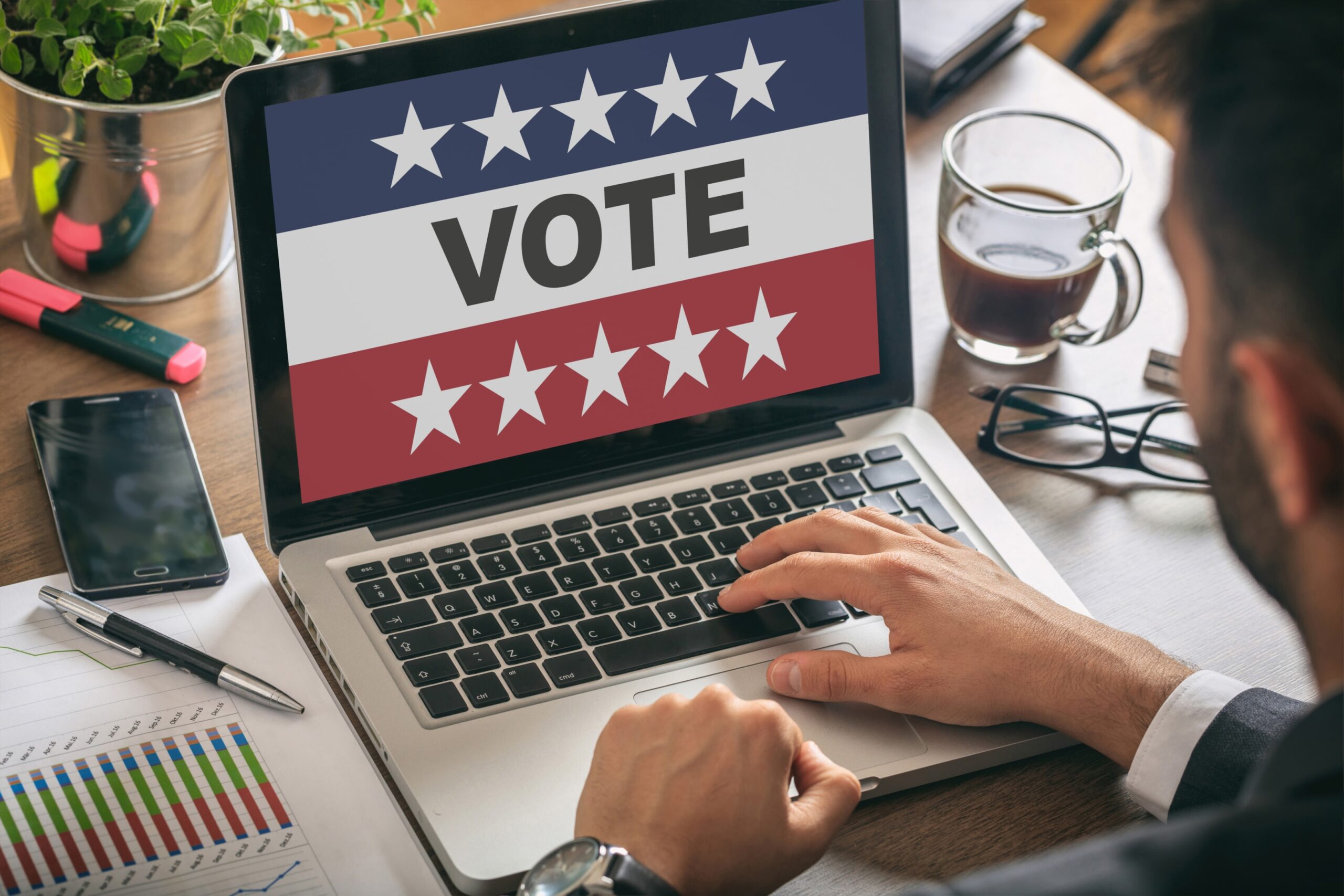Political campaigns depend on organization, resource management, and effective voter contact. Political campaign software helps campaigns handle fundraising, outreach, volunteers, and compliance from one platform.
With the right tools, campaign teams can act quickly, target voters with precision, and achieve stronger results.
In this list, you’ll see what political campaign software does, why campaigns use it, and which platforms can support winning campaigns.
What Is Political Campaign Software?
Political campaign software gives campaigns one system to manage core operations. A campaign manager can use it to store voter data, track campaign fundraising, and keep records compliant with FEC reporting.
The software keeps a central database with donors, volunteers, and voter lists. This helps campaigns organize information, plan events, and direct field operations without losing track of details.
It also provides tools for voter outreach. Campaigns can send emails, create surveys, or make calls through mobile apps with integrated tracking.
These features connect campaigns with constituents and supporters in real time.
Benefits of Political Campaign Tools in Elections
Political campaign tools give campaigns advantages that shape election outcomes:
- Targeted outreach: Campaigns segment voter data, build voter lists, and connect with constituents through walk lists and mobile canvassing apps. This helps reach more voters.
- Fundraising systems: Integrated FEC compliance reporting keeps records secure. Campaigns track donations, file forms correctly, and maintain accurate donor information.
- Field operations: Campaign managers assign tasks and monitor interactions in real time. Volunteers access updated information, which keeps teams aligned across events and community activity.
- Data insights: Analytics reveal which messages and events build support. Campaigns use this information to adjust plans and expand outreach to citizens.
Political Campaign Software You Can Try
Campaign professionals have many options when choosing political software. Below are the top platforms that campaigns rely on to reach voters, raise money, and manage operations.
1. Pulsar
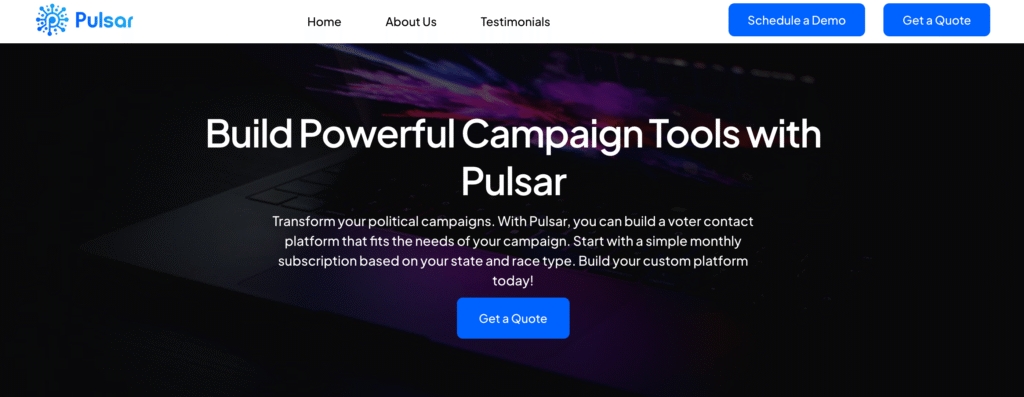
Pulsar is a voter contact platform built by Republican operatives with decades of campaign experience.
Its creators include deputy directors, state directors, national and state data directors, and volunteers. They understand what campaigns need to win.
The platform connects volunteers with targeted voters through door-to-door canvassing and phone banking. It gives campaigns one system to manage outreach, fieldwork, and data.
Key Features
- Political CRM with built-in voter management
- Preloaded voter file for instant access to data
- Custom platform setup based on state and campaign type
- Volunteer and field management tools for assignments and tracking
- Optional add-ons for phone, texting, polling, or modeled data
- Proven record with 120k campaigns served, 100M voters reached, and 40k users
Why Campaign Managers Choose Pulsar
Pulsar gives Republican campaigns a dependable platform for voter outreach and volunteer coordination. It also simplifies data tracking.
The system is quick to set up and easy to use. Campaigns across states and races trust it to deliver results.
How Pulsar Works
Start with a monthly subscription tied to your state and race type. Options include statewide, US Senate, gubernatorial, US Congress, state Senate, state House, county, or city campaigns.
Add extra tools like phone banking, texting, polling, or modeled data. This lets you create a system that truly fits your campaign.
Set up Pulsar in a few steps. Pick your race and state. Add the features you need. Launch your voter contact system.
Request a demo or get a quote to see how Pulsar can power your election!
2. i360
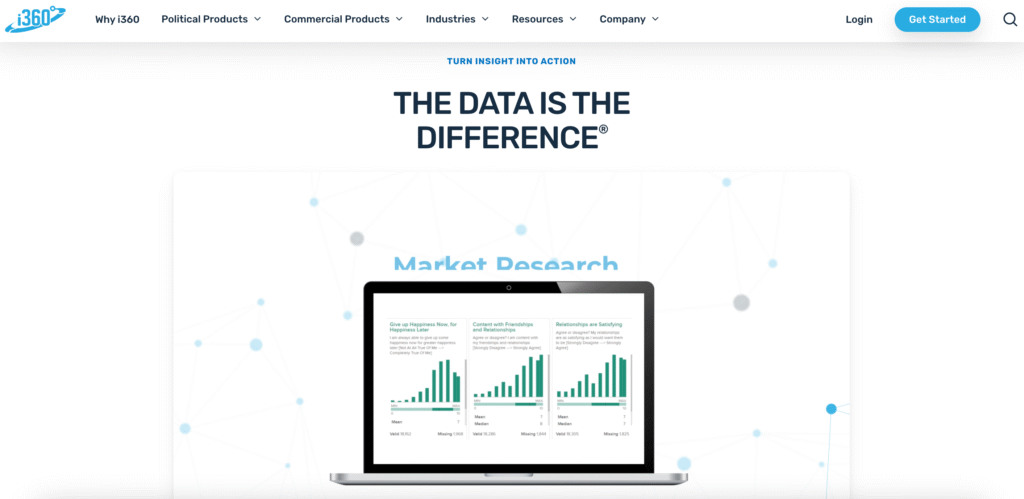
Image source: i-360.com
i360 is a campaign platform centered on voter data and analytics. It has supported more than 5,000 victories across all 50 states, giving campaigns tested tools for both local and national races.
The system combines predictive modeling, turnout projections, and grassroots outreach tools. Campaigns use it to analyze voter files, build targeting strategies, and reach constituents through canvassing and phone banking.
i360 offers plans for different race types, from local contests to statewide campaigns.
Its targeting technology links voter issues with campaign goals and helps managers direct outreach where it delivers results.
Key Features
- Voter database and analytics with turnout projections and predictive modeling
- Grassroots outreach tools, including canvassing and phone banking
- Custom data strategies for congressional, statewide, and U.S. Senate races
- Targeting technology that aligns campaign goals with voter issues
- Plans for local campaigns such as state House, state Senate, county, and mayoral races
3. Ecanvasser
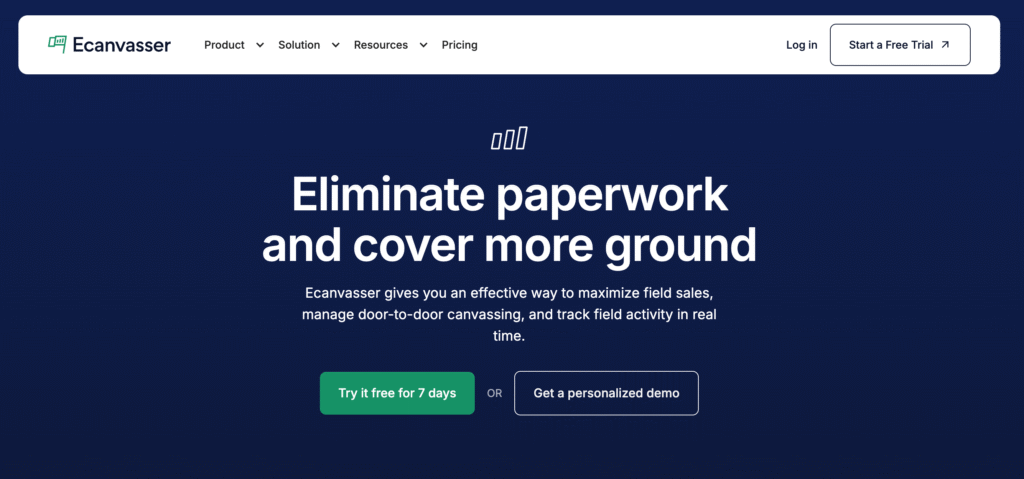
Image source: Ecanvasser.com
Ecanvasser is political software that manages voter outreach and field operations. It provides campaigns with one system to coordinate canvassing, track activity, and update voter records.
Campaign managers can review performance in real time and adjust outreach as needed.
The mobile canvassing app assigns routes, guides volunteers with custom scripts, and records interactions for later analysis.
The platform stores campaign history in a centralized database, so voter records stay accessible throughout an election. It also includes a leaderboard that ranks canvasser activity to encourage participation.
Key Features
- Centralized database to store voter records and campaign history
- Mobile canvassing app with route maps and territory assignments
- Field tracking tools to monitor canvasser activity and voter interactions
- Custom scripts for canvassers to guide conversations and collect data
- Leaderboard system to rank canvassers and encourage participation
- Reporting tools that provide on-demand campaign insights
4. Voter Gravity
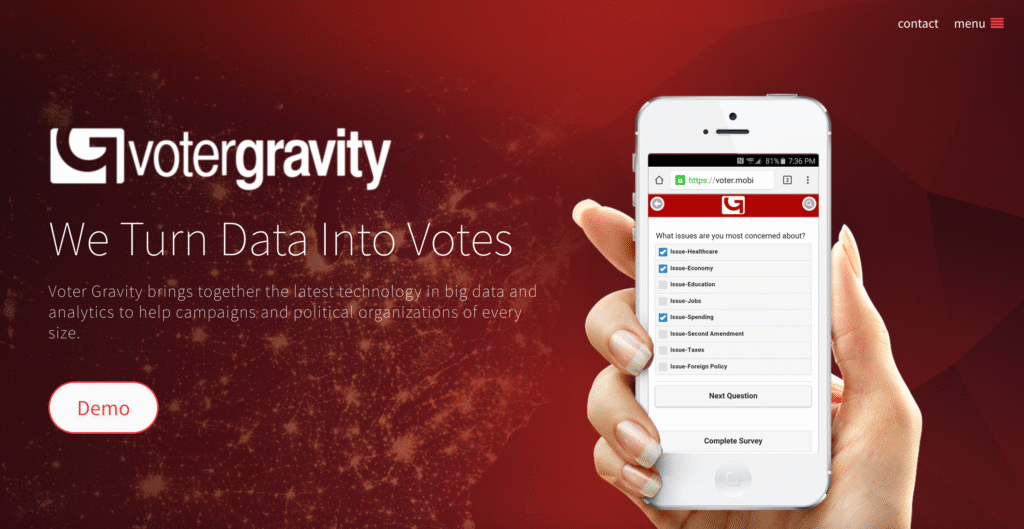
Image source: Votergravity.com
Voter Gravity is a mobile and map-based voter contact platform that connects outreach and data through one system. It helps campaigns reach voters, donors, and activists using accurate and updated voter information.
The platform combines big data with field tools that handle canvassing and phone outreach.
Campaign managers can assign walk lists, track field activity, and address voter data changes from a single dashboard.
Voter Gravity includes a pre-loaded and verified voter database that supports predictive dialing, customizable surveys, and donor tracking.
Campaign teams can search voter records, monitor progress, and maintain organized data across every outreach effort.
Key Features
- Map-based walk lists that guide volunteers through optimized routes
- Integrated phone banking with predictive dialing for voter contact
- Mobile canvassing app with offline access and live data updates
- Donor tracking tools that record contributions and supporter information
- Secure cloud storage that protects voter data and supports platform integration
Steps to Implement Political Campaign Software
Political campaign software delivers results when campaigns follow a structured plan. A step-by-step process helps teams manage operations without setbacks.
- Define campaign goals: Decide whether the priority is voter outreach, campaign fundraising, volunteer coordination, or compliance reporting. Goals guide software selection and planning.
- Select the platform: Compare software features based on race type. Some focus on canvassing or phone banking, while others provide broader solutions. Request demos to see how automation and data tools fit campaign tasks.
- Build a data strategy: Import voter records, donor files, and volunteer contacts into the database. Keep information current with updates after calls or canvases. Add lifestyle information when relevant to sharpen targeting.
- Train staff and volunteers: Assign an administrator to manage accounts and permissions. Provide short training sessions on tasks such as updating records or sending unlimited emails. Supply resources that empower teams to handle daily work.
- Execute and monitor: Launch a pilot before full rollout. Use reporting tools to track outreach and fundraising results. Review progress often and adjust plans to optimize campaign performance.
Careful preparation turns political software into a dependable asset. Campaigns that follow these steps can organize outreach, manage voter data, and guide staff successfully.
Win More Voters and Volunteers With Pulsar’s CRM and Tools
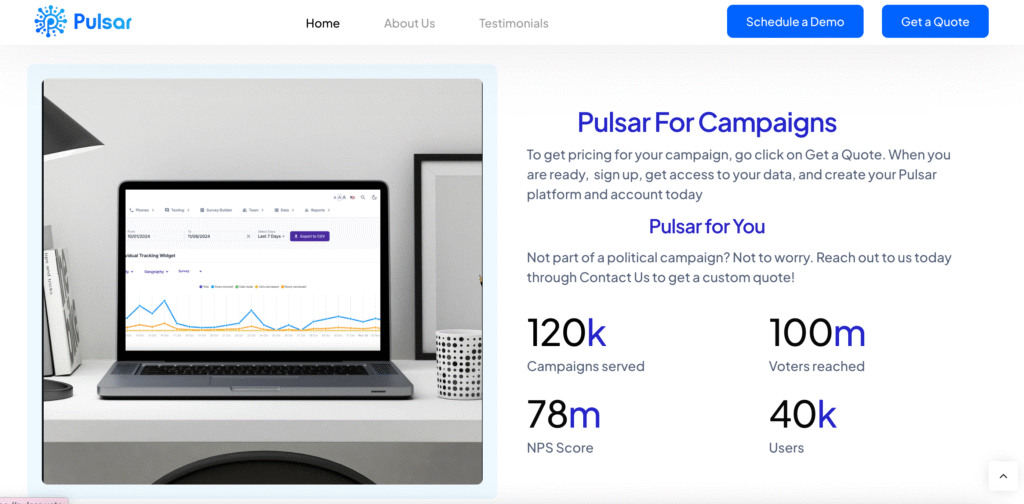
Political campaigns succeed when voter contact, data, and field operations run through one dependable system.
Pulsar provides that system with a political CRM, a preloaded voter file, and custom options based on state and race type.
Pulsar is widely recognized among Republican vendors and campaign professionals. Teams across the country use it to manage volunteers, coordinate outreach, and drive turnout on election day.
It holds a strong 78 NPS Score and supports more than 40,000 active users. Pulsar has served over 120,000 campaigns and reached more than 100 million voters. These results prove its ability to deliver success at every level of the ballot.
Campaigns value the way Pulsar keeps operations organized and focused. Its tools make it easier to manage volunteers, target voters, and build momentum through Election Day.
FAQs About Political Campaign Software
How does political campaign software help with campaign fundraising?
It stores donor records in a central database, tracks contributions, and generates compliance reports for FEC filing. Campaigns can also send emails and create online forms to raise money and reach more donors.
Why should a campaign manager use political campaign software?
Campaign managers use political campaign software to manage volunteers, voter outreach, and field operations. This reduces missed tasks, keeps records secure, and gives teams the structure they need to run a campaign from start to finish.
Does political campaign software handle compliance?
Yes. Most systems include features for FEC compliance reporting. Campaigns can track donations, generate reports, and ensure their financial records stay accurate throughout the election cycle.


